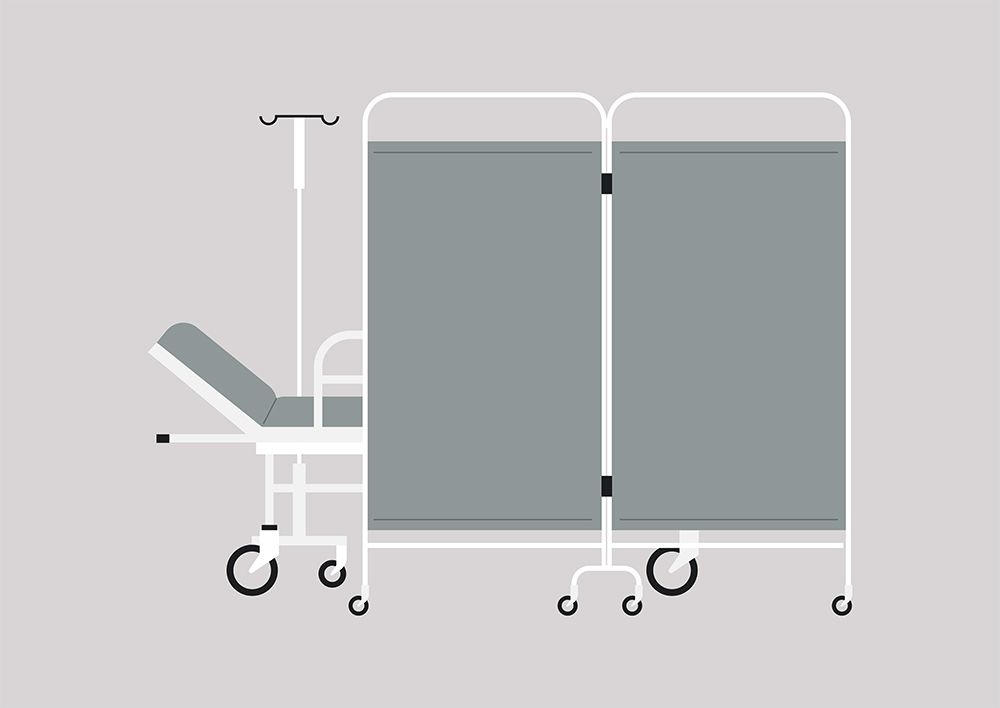
HAIs (hospital-acquired infections) continue to devastate hospitals and clinics in the US and worldwide. Approximately 1 in 31 patients contract at least one infection as a direct result of their hospital care. According to the CDC, hospital-borne infections kill nearly one million patients annually in the US and cause a host of illnesses and complications to over a million and a half or more.
This epidemic has spawned the growth of innovative companies eager to combat HAIs. One such company is KleenEdge™, a company focused on managing contaminants on room-dividing curtains. The company’s website states:
“Curtains are the #6 High-Risk Touchpoint in a patient room, yet the ONLY item not disinfected on a daily basis. Currently, in the US, curtains remain hanging for up to one year without being cleaned or replaced. Studies show that curtains are frequently infected with MRSA, C.Diff, VRE, and other deadly bacteria and viruses after just two weeks back from laundering. Current laundering methods do not guarantee that curtains are, in fact, bacteria and virus free.”
Additionally, the results of a study conducted in 2020 stated that hospital curtains “are contaminated with pathogens, and that these areas are frequently touched by health care workers in between hand hygiene.” (Brown et al., 2020) This conclusion and the information presented above would lead many to believe that healthcare facilities must have efficient practices to ensure these curtains are clean; however, that is just not the case.
Let’s take a moment to explore the struggles that many hospitals and healthcare providers face, which contribute to the lack of care and effort put forth toward sterilizing curtains. First, many curtains are difficult to exchange because they are mounted high and require ladders and available maintenance staff to remove and replace them. Furthermore, curtain costs increase due to the need to replace lost or damaged curtains in the laundering process. At the same time, manual documentation is prone to errors and can quickly become a task pushed to the bottom of the priority list. The US standard of care states that curtains should only be cleaned when “visibly soiled or stained” these issues often contribute to patients and staff not receiving the standard of care they deserve.
KleenEdge™ incorporates a unique approach to this problem through the integration of technology. Their software allows healthcare providers to easily track the exchange process of each curtain within their office, hospital, or health system. The primary purpose of the company and software is to ensure that patients are provided with a more sterile environment to decrease HAIs across the globe.
In addition to the added safety, the products have the additional benefit of simplifying operations. As stated by the company, “Once deployed, the software will automatically manage and flag exchanges while gathering quantifiable data including details on Isolation Room exchanges.” In a healthcare system with a track record of putting little thought or energy into changing curtains, this technology will prove invaluable through ease of use, operational efficiency, and patient safety.
References:
Brown, L. (2020). The “leading edge” of a hospital curtain. American Journal of Infection Control. Retrieved January 10, 2023, from https://www.sciencedirect.com/science/article/abs/pii/S0196655320301966
Hospital curtains and protocol validation. KleenEdge. (2021, March 15). Retrieved January 10, 2023, from https://www.kleenedge.com/



0 Comments